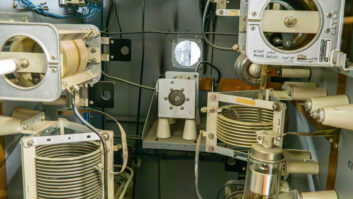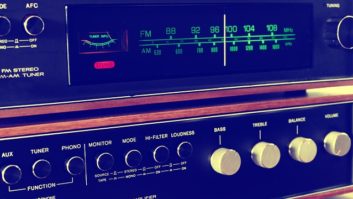 Value engineering. What does that mean? As broadcast engineers, we typically don’t build devices, but we do build systems, often made up of equipment from multiple, disparate manufacturers. We start off by determining the goal of the project — just what is the system supposed to accomplish? We then begin drilling down to key elements of the system, their roles and how they interact with other parts of said system.
Value engineering. What does that mean? As broadcast engineers, we typically don’t build devices, but we do build systems, often made up of equipment from multiple, disparate manufacturers. We start off by determining the goal of the project — just what is the system supposed to accomplish? We then begin drilling down to key elements of the system, their roles and how they interact with other parts of said system.
But always in the background, we’re forced to work within a framework of cost. It’s great to say, “If money were no object, this is what I would do …” but I have yet to work on a project for a radio station in which money was not an object. I’m quite sure the same goes for you. We all have budgets that need to be satisfied.
When we purchase a piece of gear, there are several aspects of it that we must consider:
• Role in the system
• Functionality
• How well it integrates with other parts of the system
• Upfront cost
• Operating cost
And let’s face it, a big part of the purchasing decision is whether we like a brand or not, and that comes mainly from prior experience. Trying a new brand, or a new technology, is often something people don’t want to do because they have no experience with it and can’t form any idea of how it will affect them negatively. “Tried and true” is something most of us want to stick with.
Value engineering comes into play when what you want to accomplish doesn’t fit within budgetary requirements. It’s as simple as that.
Say, for example, you’re moving an entire radio station cluster to a brand-new facility, and when you look at the overall cost for the entire project, you find that it’s short on budget by, say, 10%. (That’s also of concern because you’ve no contingency money at the end.)
Another cause for value engineering would be when you want to get a certain item, but it doesn’t fit within your budget parameters, so you are left figuring out what else can be removed, or otherwise made less expensive, so that your desired “thing” then does fit.
HOW TO FIND THAT 10 (OR MORE) PERCENT
It should be obvious that the easiest way to find savings is by studying the largest budget line items first, since they’ll have the most impact mathematically. In a studio move, for example, that will likely be consoles, followed by furniture. In a transmitter site build, that will likely be the transmitter itself.
If you’ve found out that you are over budget after completing your initial design, likely there will be some anger and frustration to get over. You could be saying to yourself, “We just can’t do it for that much!” and it’s probably true. (Although it’s putting the cart before the horse, many times budgets get set before the system design is complete. It happens that way all the time.)
The order in which I would look for savings, from the least worst to the worst, is this:
• Can I reduce some of the studios to a less complex (and less expensive) console model?
• Can I reduce the size of the routing system? Do I really need that many inputs and outputs?
• Can I defer the building of several of the studios until a different budget period comes along?
• Can I re-use one or more of the “old” studios at the new place until a different budget period comes along?
No one wants to take this approach, but it’s one of the many aspects of managing a large capital project that you must be able to do in order to succeed. Hopefully, you’ll have your project fully budgeted before the station owners say, “Just how much is this going to cost?” so that you don’t find yourself in this position. Be forewarned, though: Just because you have all the numbers added up doesn’t mean that the station owners will agree to that amount.
There’s much more on the topic of value engineering, which we’ll discuss in future editions of Best Practices. And as always, we welcome your contribution on the topic.
Doug Irwin, CPBE AMD DRB, is vice president of engineering at iHeartMedia in Los Angeles and a technical advisor to Radio World.
Comment on this or any story. Email [email protected] with “Letter to the Editor” in the subject field.







